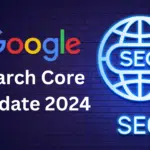In the vast online world, making your website stand out is like a treasure hunt. For businesses and content creators alike, understanding the intricacies of SEO is crucial to not only stay afloat but to soar high in search engine rankings. In this comprehensive guide, we will dive deep into the realm of SEO, unraveling effective strategies, offering valuable tips, and sharing best practices to elevate your website’s visibility on search engines. Let’s break it down into easy steps, with practical tips to boost your website’s ranking on search engines.
Understanding the Essence of SEO
Search Engine Optimization is not a static concept; it’s a dynamic, ever-evolving landscape that demands continuous adaptation. At its core, SEO is about optimizing your website to be easily discoverable and relevant to search engine algorithms. This involves a combination of technical, on-page, and off-page optimization strategies.
Navigating Technical SEO Waters
Begin your SEO journey by ensuring your website’s technical foundation is solid. A well-structured website, free of technical issues, is favored by search engines. Below are the key factors to consider while performing Technical SEO:
- Website Speed and Performance:
- Optimize images and use efficient coding to improve page loading times.
- Utilize Content Delivery Networks (CDNs) to distribute content across servers globally for faster access.
- Regularly monitor and address server response times to ensure quick page rendering.
- Mobile-Friendly Design:
- Ensure that your website is responsive and offers a seamless experience on various devices, especially mobile.
- Implement mobile-friendly design principles, such as touch-friendly buttons and readable text without zooming.
- Proper Indexing:
- Create and submit a sitemap to search engines to help them understand the structure of your website.
- Use robots.txt files to control search engine crawlers’ access to specific parts of your site.
- Crawlability and Accessibility:
- Fix and monitor crawl errors using tools like Google Search Console to ensure search engines can access all parts of your website.
- Use HTML sitemaps to assist users and search engines in navigating your site easily.
- Structured Data Markup:
- Implement structured data (Schema.org) to provide search engines with additional context about your content.
- Use markup for elements like reviews, events, and products to enhance search engine understanding.
- SSL and HTTPS:
- Ensure your website is secure by using HTTPS, which is a ranking factor for search engines.
- Obtain an SSL certificate to encrypt data transmitted between the user’s browser and your server.
- Canonicalization:
- Implement canonical tags to resolve duplicate content issues and indicate the preferred version of a page.
- Use 301 redirects to redirect traffic from old or duplicate URLs to the canonical version.
- URL Structure:
- Keep URLs simple, descriptive, and readable by both users and search engines.
- Avoid dynamically generated URLs with excessive parameters, as they can be challenging for search engines to interpret.
- Technical Site Audits:
- Conduct regular technical audits to identify and fix issues affecting SEO performance.
- Use tools like Screaming Frog, Google Search Console, and Moz to analyze technical aspects of your website.
- Structured Header Tags:
- Organize content with proper header tags (H1, H2, H3, etc.) for improved readability and search engine understanding.
- Ensure headers accurately represent the hierarchy and topic structure of your content.
- Page Speed Insights:
- Regularly check your website’s speed using tools like Google PageSpeed Insights.
- Address recommendations provided by these tools to enhance user experience and search engine rankings.
Technical SEO lays the foundation for a website’s success in search engine rankings. By focusing on these key elements, you can ensure that your website is well-optimized, easily accessible, and favorable to search engines and users alike.
Keywords: The Compass of SEO
Keywords are the language of search engines. Conduct thorough keyword research to understand what terms your audience is using to find products or services similar to yours. Integrate these keywords strategically into your content, meta tags, and headers. However, avoid keyword stuffing, as search engines prioritize content that provides value over those attempting to manipulate rankings.
Crafting Quality Content: The Anchor of SEO
Content remains king in the digital realm. Develop high-quality, relevant, and engaging content that caters to your audience’s needs. Regularly update your content to reflect industry changes and keep it evergreen. Search engines reward fresh and valuable content, contributing to improved rankings.
Link Building: Navigating the Backlink Seas
Backlinks are the backbone of off-page SEO. Build a robust backlink profile by acquiring high-quality links from reputable websites within your niche. Foster relationships with influencers and engage in guest posting to establish your authority in the industry. However, prioritize quality over quantity, as search engines value relevance and credibility.
User Experience: Sailing Smoothly
User experience (UX) is a crucial factor influencing search rankings. Ensure your website is user-friendly, with easy navigation and a clean design. A positive user experience not only retains visitors but also signals to search engines that your site provides value.
Embracing Analytics: The Lighthouse of SEO Success
Implementing SEO strategies without monitoring their effectiveness is akin to sailing without a compass. Utilize analytics tools to track key performance indicators (KPIs), monitor website traffic, and measure the impact of your SEO efforts. Regular analysis allows for course correction and optimization based on real-time data.







